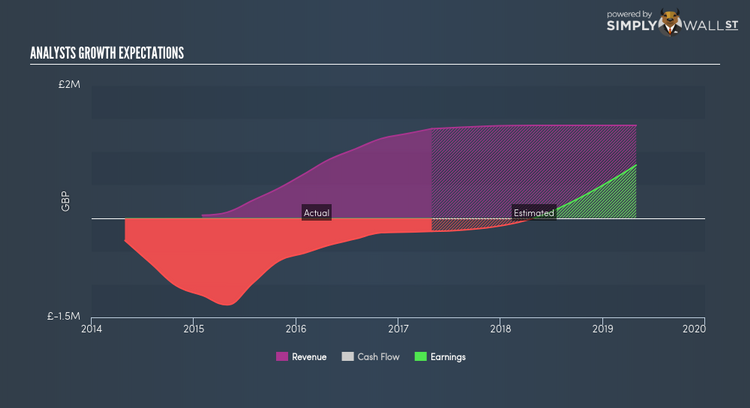What Does Plutus PowerGen plc’s (LON:PPG) Share Price Indicate?

Plutus PowerGen plc (AIM:PPG), a independent power and renewable electricity producers company based in United Kingdom, saw significant share price volatility over the past couple of months on the AIM, rising to the highs of £0.03 and falling to the lows of £0.02. This high level of volatility gives investors the opportunity to enter into the stock, and potentially buy at an artificially low price. A question to answer is whether Plutus PowerGen’s current trading price of £0.02 reflective of the actual value of the small-cap? Or is it currently undervalued, providing us with the opportunity to buy? Let’s take a look at Plutus PowerGen’s outlook and value based on the most recent financial data to see if there are any catalysts for a price change. View our latest analysis for Plutus PowerGen
Is Plutus PowerGen still cheap?
Plutus PowerGen appears to be overvalued according to my relative valuation model. In this instance, I’ve used price-to-book ratio (PB) ratio given that there is not enough information to reliably forecast the stock’s cash flows, and its earnings doesn’t seem to reflect its true value. I find that Plutus PowerGen’s ratio of 16.32x is above its peer average of 1.9x, which suggests the stock is overvalued compared to the independent power and renewable electricity producers industry. If you like the stock, you may want to keep an eye out for a potential price decline in the future. Since Plutus PowerGen’s share price is quite volatile, this could mean it can sink lower (or rise even further) in the future, giving us another chance to invest. This is based on its high beta, which is a good indicator for how much the stock moves relative to the rest of the market.
Can we expect growth from Plutus PowerGen?
Investors looking for growth in their portfolio may want to consider the prospects of a company before buying its shares. Although value investors would argue that it’s the intrinsic value relative to the price that matter the most, a more compelling investment thesis would be high growth potential at a cheap price. In the upcoming year, Plutus PowerGen’s earnings are expected to increase by 100.00%, indicating a highly optimistic future ahead. This should lead to more robust cash flows, feeding into a higher share value.
What this means for you:
Are you a shareholder? Plutus PowerGen’s optimistic future growth appears to have been factored into the current share price, with shares trading above its fair value. However, this brings up another question – is now the right time to sell? If you believe Plutus PowerGen should trade below its current price, selling high and buying it back up again when its price falls towards its real value can be profitable. But before you make this decision, take a look at whether its fundamentals have changed.
Are you a potential investor? If you’ve been keeping tabs on Plutus PowerGen for some time, now may not be the best time to enter into the stock. The price has surpassed its industry peers, which means it is likely that there is no more upside from mispricing. However, the optimistic prospect is encouraging for Plutus PowerGen, which means it’s worth diving deeper into other factors in order to take advantage of the next price drop.
Price is just the tip of the iceberg. Dig deeper into what truly matters – the fundamentals – before you make a decision on Plutus PowerGen. You can find everything you need to know about Plutus PowerGen in the latest infographic research report. If you are no longer interested in Plutus PowerGen, you can use our free platform to see my list of over 50 other stocks with a high growth potential.
To help readers see pass the short term volatility of the financial market, we aim to bring you a long-term focused research analysis purely driven by fundamental data. Note that our analysis does not factor in the latest price sensitive company announcements.
The author is an independent contributor and at the time of publication had no position in the stocks mentioned.

